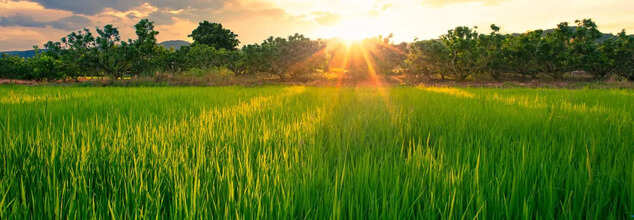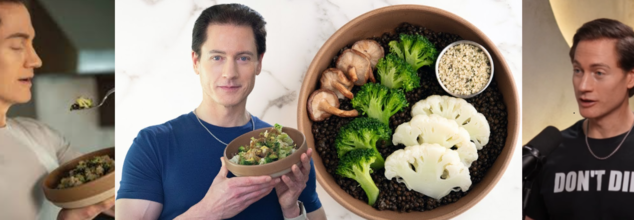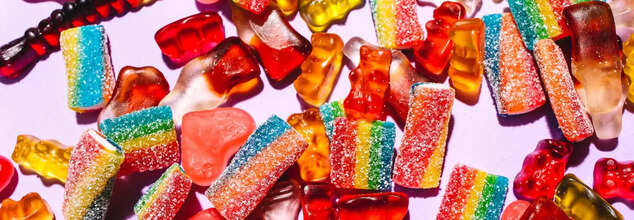- Health Conditions A-Z
- Health & Wellness
- Nutrition
- Fitness
- Health News
- Ayurveda
- Videos
- Medicine A-Z
- Parenting
- Web Stories

Image credit: Canva
15 Low-Sodium Foods To Cut Down Excessive Salt Intake
A low-sodium diet is one of the most important measures to control certain health disorders, such as high blood pressure, kidney disease, and heart-related diseases. It protects your heart and brings a variety of delicious menu options to your table. Generally, excessive sodium consumption raises blood pressure and increases the chances of heart diseases.
Given the fact that an average American takes over 3,300 milligrams of sodium a day and exceeds the limit of 2,300 milligrams of recommended sodium, it's high time to change your diet. Here is a comprehensive list of 16 low-sodium foods for healthy lifestyles and reducing excessive salt intake.
What is a Low-Sodium Diet?
Sodium is an essential mineral and plays a critical role in cellular function, electrolyte balance, and blood pressure regulation. Even though it is naturally present in many foods, processed and packaged items tend to be much higher in sodium. Avoiding these high-sodium foods and choosing fresh, wholesome ingredients is the key to a low-sodium diet.
These diets are highly recommended for patients who have blood pressure cases, kidney problems, or a heart disease case. In addition, following a low-sodium program is not only helpful to minimize health risks but also can develop healthy eating habits.
1. Fresh Fruits Instead of Canned
Canned vegetables have added salt to preserve them. For fresh produce or thoroughly rinse the canned vegetables, which cut down on sodium. Spinach, kale, and carrots are nutrient-dense with naturally low sodium.
Pro Tip: Honey garlic green beans is a tasty recipe for a low-sodium side dish.
2. Mushroom caps
Bread can be a hidden source of excessive sodium, especially when consumed in multiple slices. A great alternative is to swap bread for veggie options like ricotta-stuffed portobello mushrooms, which offer a low-sodium, nutrient-rich alternative reminiscent of open-faced sandwiches.
3. Homemade Soups Over Canned Soups
Canned soups are infamous for their high sodium content. Instead, prepare your own soups from fresh ingredients at home. The hearty, low-sodium chicken barley soup or a variety of vegetable soups are great options that can be prepared to your taste buds' liking.
4. Swiss Cheese Instead of Cheddar
Cheese can be a significant source of sodium, but Swiss cheese is the better alternative. Furthermore, creamy alternatives such as plain Greek yogurt or avocado can substitute for cheese in most recipes with minimal sodium content.
5. Popcorn instead of chips
When cravings strike, popcorn is a good substitute for salty chips. Sprinkle herbs or nutritional yeast over it for flavor without salt. Another low-sodium snack idea is ranch-seasoned popcorn.
6. Homemade Tomato Sauce
Pasta sauces in jars often hide sodium. Fresh tomatoes, garlic, and basil are the ingredients to make homemade tomato sauce, a healthier alternative that is quick to prepare for weeknights.
7. Potato Wedges Over French Fries
French fries, slathered with salt, can be a pitfall in your low-sodium diet. Try baking herbed potato wedges at home with little salt or go for veggie fries for a healthier alternative.
8. Grains Like Oats, Barley, and Quinoa
Whole grains contain less sodium and more nutrients. Compare the labels for packaged grains and try the no-sodium or low-sodium version. Make soups, salads, or breakfast bowls using oats, barley, or quinoa.
9. Low-Sodium Dairy Products
Use low-fat or non-fat milk, yogurt, and cheeses that have less sodium. Fresh mozzarella, ricotta, and goat cheese tend to be lower in sodium compared to processed cheeses.
10. Avocados and Healthy Fats
Avocados and olive oil are rich sources of healthy fats and are low in sodium naturally. Add them to salads, spreads, or cooking for flavor and texture.
11. Unsalty Nuts and Seeds
Do not go for the salty versions. Opt for unsalted almonds, pumpkin seeds, or peanuts. They can provide crunch with essential nutrients without any extra sodium.
12. Low-Sodium Soups
Whether they are canned or homemade, always choose low-sodium ones. Such soups save the day in case of urgent meals but ensure that sodium levels do not increase in the body.
13. Low-Sodium Bread and Baked Goods
Bread and tortillas can creep in high amounts of sodium. Look for whole-wheat varieties that are low-sodium. Top them with fresh ingredients for a healthy snack or meal base.
14. Non-Dairy Milk
Fortified with calcium, this is a great low-sodium alternative to traditional dairy. It's versatile and does well in cooking and baking.
15. Egg Whites
Egg whites are also an even lower-sodium alternative to whole eggs for those who want to reduce sodium even further but still desire high-protein meals. 16. Fresh Herbs and Spices Instead of salt, try fresh herbs and spices such as basil, oregano, and turmeric. They are great flavor enhancers that add health benefits without contributing to sodium intake. High-
Sodium Foods to Avoid
To keep within your sodium bounds, it is important to limit or avoid foods like:
- Canned goods preserved in salt or broth
- Processed meats such as sausages and hot dogs
- Instant noodles with salty flavor packets
- Salty snack foods such as chips and crackers
- Frozen dinners and ready-to-eat meals
- High-sodium condiments like soy sauce and MSG
A low-sodium diet is an attainable, healthful way to manage sodium while maintaining flavorful, nutritious foods. Use fresh, unprocessed ingredients and create homemade recipes to drastically cut sodium levels and safeguard overall health. From creamy Swiss cheese to crunchy unsalted nuts, there is no lack of flavor options. So go ahead and take charge of your health by using these low-sodium alternatives; you will enjoy the health benefits of a balanced, heart-friendly diet.

Credit: Canva
Is Climate Change Affecting The Rice In Your Kitchen?
As climate change intensifies, researchers have predicted that arsenic in rice could increase and trigger a major public health crisis. Rice is a staple in many countries. In Asia, particularly in Japan and Korea, it is an important component in all meals. A rise in the arsenic, therefore, could seriously exacerbate deadly diseases, including cancer.
What is Arsenic?
Arsenic is a naturally occurring metallic element, widely distributed in the Earth's crust and found in various forms, like inorganic and organic. Research shows that it is toxic and does lead to severe health issues like cancers of the bladder, lung and skin, as well as several cardiovascular and neurological diseases.
Why is arsenic content in rice increasing?
Researchers from Colombia University, stated that an increase in temperatures above 2 degrees Celsius combined with rise in carbondioxide in the atmosphere can alter the soil chemistry, favouring arsenic, which gets more easily absorbed in rice grain. Contaminated soil and irrigated water while growing rice are known to increase inorganic arsenic in rice.
What Did Researchers Say?
The study was conducted by researchers from Columbia University and published in The Lancet Planetary Health. The study explained that an increase in temperatures above 2 degrees Celsius and rising levels of carbon dioxide could be causing changes in soil chemistry, favouring arsenic, which gets more easily absorbed into a rice grain. Contaminated soil and irrigated water from that area, while growing rice are known to increase inorganic arsenic in rice.
"Our results suggest that this increase in arsenic levels could significantly elevate the incidence of heart disease, diabetes, and other non-cancer health effects," said author Lewis Ziska, associate professor of environmental health sciences, Columbia University, said. "We found that temperature and CO2 act synergistically to increase arsenic concentrations in rice, compounding dietary arsenic exposures for rice consumers and leading to projected cancer cases in the tens of millions among populations of Asian countries in 2050," according to the study.
Are there any mitigation strategies?
There are ways to mitigate arsenic exposure. This includes breeding plants to minimise arsenic uptake and improved soil management in rice paddies, along with health initiatives. THE US FDA also recommends replacing cereals from rice with those with whole grains. Published studies, including research by the FDA, show that cooking rice similar to how pasta is cooked can reduce 40 to 60 per cent of the inorganic arsenic content, depending on the type of rice. However, this method of cooking rice in excess water—using 6 to 10 parts water to 1 part rice and then draining the excess water—also results in lowering the nutritional value of enriched polished and parboiled rice

Credits: YouTube and Instagram
The Longevity Diet: Bryan Johnson Eats 3 Meals In 6 Hours—With Extra Virgin Olive Oil
Bryan Johnson, the 47-year-old tech entrepreneur who is known for his anti-ageing techniques and for his quest to reverse his biological age has finally ditched the medicine that has kept him young. He had recently been featured in Netflix documentary Don't Die: The Man Who Wants To Live Forever, where he has shown his various attempts on achieving more time on the planet, his quest for longevity.
To live 'forever' he had been consuming 13 milligrams of immunosuppressant rapamycin for the last five years. However, he has now given it up after he found out that the side effects outweighed the advantages.
As per the opinion article published in Impact Journals, titled Rapamycin for longevity, it can extend maximum life span nearly three-fold. It can also prolong life in normal mice as well as in yeast, worms, and flies, and prevents age-related conditions in rodents, dogs, nonhuman primates and humans. It has been FDA-approved for humans and has been used safely for decades. In 2006, it was suggested that rapamycin could be used immediately to slow down aging and all age-related diseases in humans. However, another study published in Oncotarget, titled About-face on the metabolic side effects of rapamycin, it can lead to metabolic defects, including hyperglycemia, hyperlipidemia, insulin resistance and increased incidence of new-onset type 2 diabetes.
Now without the medicines, what all does Johnson do to keep his quest for longevity going? He focuses on what he eats!
The Diet For Longevity
On a podcast with Jay Shetty on his show On Purpose, he revealed that he ensures his daily diet is roughly of 2,500 calories per day and his meals are all between 6 am and 11.30am. The NHS also recommends that an average man needs 2,500kcal a day.
His day starts with 54 supplements and an hour in the gym. He also revealed that he has never had cheat meals in his life ever. "Now the idea of eating a piece of pizza or a whole pizza or like a doughnut or something just makes me sick. Because if I'm going to do it, there'll be like five seconds of maybe enjoyment and then you've got like an entire day of misery."
What does he eat? He consumes "A lot of broccoli, cauliflower, lentils, hemp, pea protein, hemp protein, berries, nuts, seeds."
What Are The Three Meals In 6-Hours He Eats?
The Supper Veggie
This consists of broccoli, cauliflower, black lentils, ginger, and garlic.
The Nutty Pudding
This is made with macadamia nuts, walnuts, flax seeds, pomegranate juice, and berries, combined with pea and hemp protein.
A Mix Of All
The third meal can vary, but it usually includes a mix of all, vegetables, berries, nuts, and seeds.
ALSO READ: Bryan Johnson Launches New Religion 'Don't Die'- Here's How To Become A Member
The Extra Virgil Olive Oil On The Side
He also revealed that additionally, he also consumes a tablespoon of extra virgin olive oil with each meal and 6g of pure cocoa. "We’ve tried to construct a perfect diet, so every single calorie I consume has a specific objective," he says. This is a "stack superfoods across the board".
He is currently consuming 80 grams of protein, after he struggled at 120 grams of protein. His gut health could not take it.
Johnson also compared extra virgin olive oil to Ozempic, due to its potential health benefits and benefits in weight management and glucose control.
In one of the episodes of All The Diary Of A CEO podcast, he said, “What things can I do in my life that are easy and actionable, and have a high impact? Extra virgin olive oil is very close to number 1. It is better than Ozempic. It is.”
Johnson says that both Ozempic and extra virgin olive oil can stimulate the release of GLP-1, which is a hormone that regulates appetite and blood sugar levels. The extra virgin olive oil is a high-quality oil that is extracted from the first pressing of olive and is thus considered the purest and healthiest oils due to its rich nutritional profile.
“There is a study, where people lost 5.2 pounds consuming EVOO for nine weeks (in addition to what they are currently eating). I think the quantity for the study was 45 ml daily or something like that; it is between 30-60 ml daily. But there's things, for example, like it reduces by over 60 percent invasive breast cancer, it reduces your blood sugar levels by 60 percent post a meal and your oxidised LDL levels. The bad thing is that your body is causing damage by 80 percent post a meal. So, I have a tablespoon (of olive oil) with every single meal and it is like the super of superfoods," he said.

Credits: Canva
What Is RFK's Food Dye Plan?
Robert F Kennedy Jr has been a longtime critic of synthetic additives. He has, from time and again emphasized that Americans are consuming artificial chemicals without their knowledge or consent. "Four years from now, we are going to have most of these products off the market - or clearly labeled so you know what you are buying," he stated during a press briefing.
Now, a major announcement was made on Tuesday by the Trump administration on its plan to phase out petroleum-based artificial food dyes from the US food supply. The Trump administration and the Department of Health and Human Services (HHS), headed by Robert F Kennedy Jr., described this as a "significant milestone". The initiative is part of the broader health campaign which is branded "Make America Healthy Again".
The move is set to initiate a nationwide transition toward natural color alternatives in food production.
The National Standard
The HHS, in collaboration with the US Food and Drug Administration (FDA) said that they will establish a national standard to help the food industry move away from synthetic petrochemical dyes. This also is said to include a timeline, which will be set to replace these dyes with safer, plant-based or naturally derived alternatives.
The Dyes That Could Be Affected
The first major regulatory action under this plan involves revoking authorization of two dyes, namely Citrus Red No.2 and Orange B. The officials have also selected six more synthetic dyes to be eliminated by the end of 2026. These include FD&C Red No. 40, Yellow No. 5, Yellow No. 6, Blue No. 1, Blue No. 2, and Green No. 3.
The FDA is also planning to approve four new natural color additives shortly after a review of the additional alternatives.
FDA Commissioner Martin Makary said that for decades, American children have been "living in a toxic soup of synthetic chemicals." The administration's latest steps, he noted, are a strong move towards the elimination of petroleum-based food dyes.
Are Food Dyes Safe For Us?
As of now, the FDA defines food dyes or color additives as any substance that imparts color to food, drugs, cosmetics, or the human body. These dyes are commonly used to enhance visual appeal and to help consumers identify flavors.
While FDA guidelines state that color additives are generally safe when used correctly, there is growing concern. Some studies have linked artificial dyes to behavioral issues in children, including hyperactivity. Kennedy remarked that there are “shockingly few studies” on many of the ingredients in widespread use, calling for more thorough research.
To that end, the administration announced a partnership with the National Institutes of Health (NIH) to investigate the impact of food dyes and additives on children's development and health.
What Has Been The Response?
The plan, as of now, does not impose immediate legal restrictions. The government, however, is working closely with food manufacturers to implement the changes. Kennedy reported a positive response from industry leaders and said there is a general "understanding" of the need for reform, even if no formal agreements are in place.
Consumer and advocacy groups have praised the announcement. The Environmental Working Group (EWG) called the move “long overdue,” citing decades of evidence linking synthetic dyes to health issues. States like California and West Virginia have already passed laws restricting the use of artificial dyes in school meals and packaged foods.
However, not everyone is on board. The Consumer Brands Association, representing food and beverage companies, warned against removing what they consider safe, FDA-approved ingredients. While expressing appreciation for federal leadership, the group insisted that science and product safety must not be compromised.
© 2024 Bennett, Coleman & Company Limited

